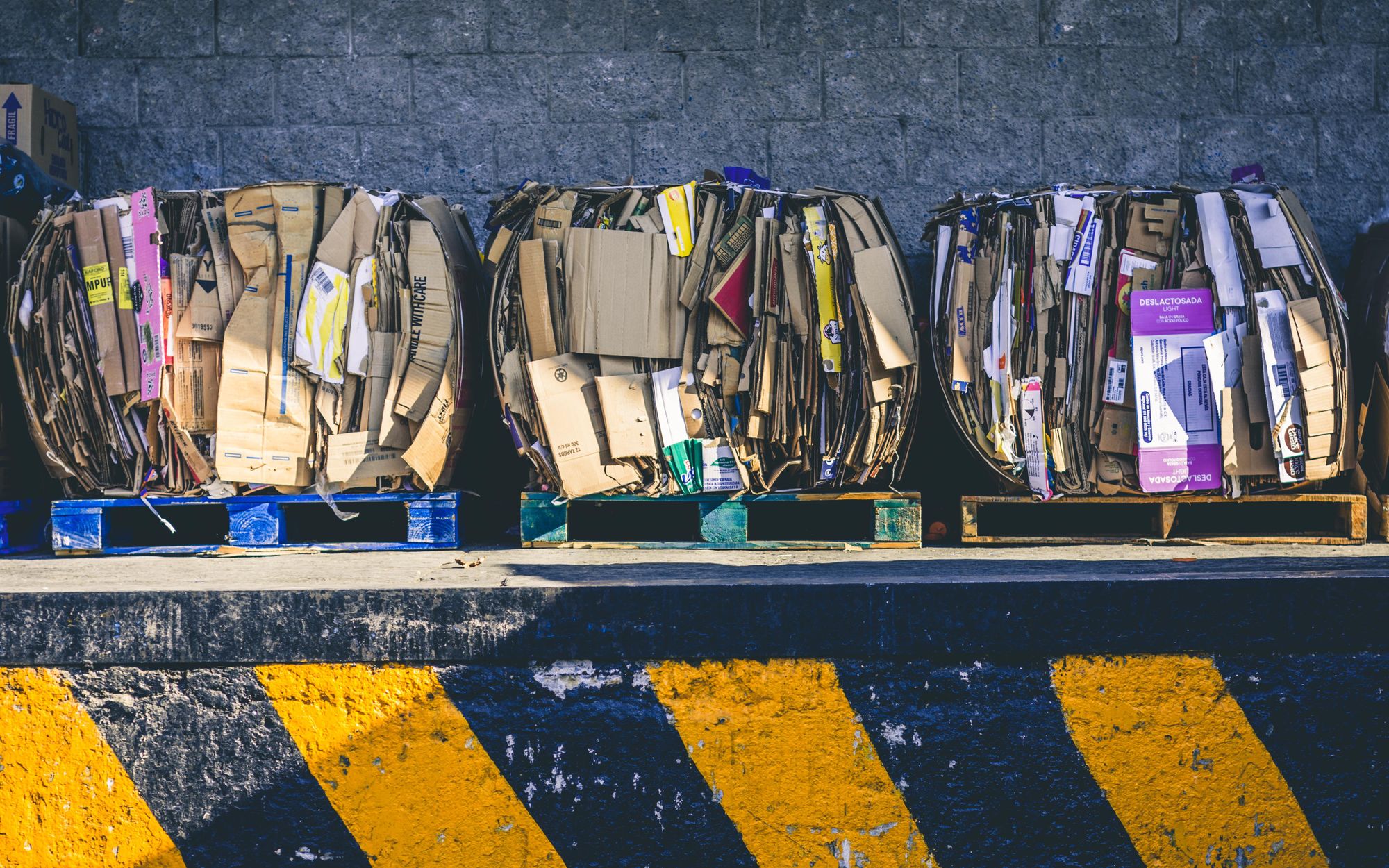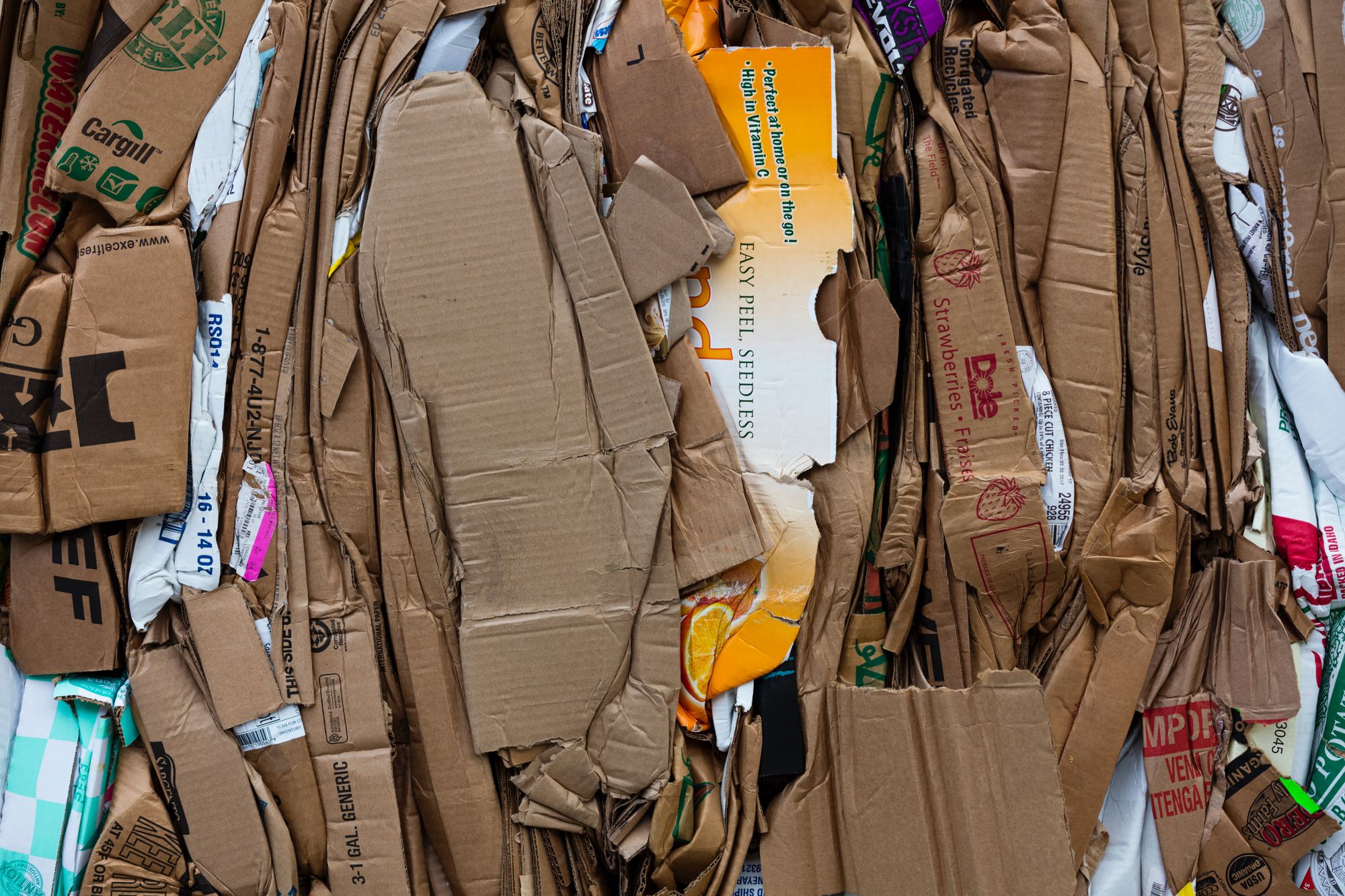The global market size of sustainable paper packaging is expected to reach USD 414.21 billion by 2026, with a CAGR of 6.7% from 2021 to 2026. (Mordor Intelligence) The global paper recycling rate reached 58.8% in 2018, with North America and Europe having the highest recycling rates. (Statista)
The global pulp and paper industry is responsible for around 4% of the world's total energy use and 6% of total greenhouse gas emissions. (Environmental Paper Network)

Sustainability has become a crucial issue in the paper manufacturing industry as the demand for paper products increases globally. The paper manufacturing process can have significant environmental impacts, including deforestation, water and energy consumption, and greenhouse gas emissions.
As a result, paper manufacturers are increasingly adopting sustainable practices to reduce their environmental impact, improve their social responsibility, and enhance their long-term economic viability.
These sustainable practices include responsible sourcing of raw materials, reducing water and energy consumption, increasing recycling rates, and implementing carbon-neutral or carbon-negative strategies.
By adopting sustainable practices, paper manufacturers can reduce their environmental footprint, meet consumer demands for environmentally friendly products, and contribute to a more sustainable future.
Thus, as is evident, it is important to understand the determinants of sustainability of paper manufacturing and strategies that you can implement to improve it.
This article will help you thereby covering the following topics:
- How Sustainable Is Paper Manufacturing?
- How to Ensure Sustainability in Paper Manufacturing?
- How to Measure the Sustainability of Paper Manufacturing?
- How to Improve the Sustainability of Paper Manufacturing?
- Upcoming Trends related to Sustainable Paper Manufacturing
- FAQs related to Sustainability in Paper Manufacturing
- How can Deskera Help You with Paper Manufacturing
- Key Takeaways
- Related Articles
How Sustainable Is Paper Manufacturing?
Several factors affect the sustainability of paper manufacturing, including the source of raw materials, energy and water consumption, emissions, and waste, the supply chain, and end-of-life disposal.
By improving sustainability practices in each of these areas, the paper industry can reduce its environmental impact and promote a more sustainable future. The factors which affect the sustainability of paper manufacturing are:
Raw Materials
The raw materials used in paper manufacturing have a significant impact on the sustainability of the process. Here are some ways in which raw materials affect the sustainability of paper manufacturing:
- Sourcing: The source of raw materials is crucial in determining the sustainability of paper manufacturing. Paper made from sustainably managed forests or from recycled materials is more sustainable than paper made from non-renewable or illegally harvested wood.
- Biodiversity: Unsustainable logging practices can lead to deforestation and loss of biodiversity. By using sustainably sourced raw materials, paper manufacturers can help protect biodiversity.
- Carbon footprint: Unsustainable logging practices can also contribute to greenhouse gas emissions, which can have a negative impact on the environment. Using sustainably sourced raw materials can help reduce the carbon footprint of paper manufacturing.
- Water usage: Unsustainable logging practices can also lead to water pollution and overuse. Sustainably sourced raw materials can help reduce the amount of water used in paper manufacturing and prevent water pollution.
- Waste reduction: Using recycled materials as raw materials can help reduce waste and promote a circular economy. Recycled materials can be used to make new paper products, reducing the need for virgin materials.
In summary, the sustainability of paper manufacturing is affected by the source of raw materials used. Sustainably sourced raw materials, such as recycled materials or wood from sustainably managed forests, can help reduce the environmental impact of paper manufacturing by promoting biodiversity, reducing carbon footprint, minimizing water usage, and promoting waste reduction.
Energy Consumption
Energy consumption is a critical factor that affects the sustainability of paper manufacturing. Here are some ways in which energy consumption can impact sustainability in paper manufacturing:
- Greenhouse gas emissions: Paper manufacturing is energy-intensive, and the energy required is often generated from fossil fuels. Fossil fuel combustion releases greenhouse gases, contributing to climate change. Minimizing energy consumption through efficient processes and using renewable energy sources can help reduce greenhouse gas emissions and promote sustainability.
- Environmental impact: Fossil fuel extraction and combustion can also have negative impacts on the environment, including air and water pollution. Reducing energy consumption in paper manufacturing can help minimize these impacts and promote sustainability.
- Cost: Energy consumption can account for a significant portion of paper manufacturing costs. By reducing energy consumption through efficient processes and renewable energy sources, paper manufacturers can reduce costs and improve economic sustainability.
- Resource depletion: Fossil fuels are non-renewable resources, and their continued use contributes to their depletion. Using renewable energy sources such as solar or wind energy can help promote sustainability in paper manufacturing by reducing reliance on non-renewable resources.
- Competitive advantage: Adopting energy-efficient practices and using renewable energy sources can give paper manufacturers a competitive advantage in the market by improving sustainability and reducing costs.
In summary, energy consumption has a significant impact on the sustainability of paper manufacturing. Minimizing energy consumption through efficient processes and renewable energy sources can help reduce greenhouse gas emissions, environmental impacts, and costs while promoting sustainability and a competitive advantage in the market.
Water Usage
Water usage is another important factor that affects the sustainability of paper manufacturing. Here are some ways in which water usage can impact sustainability in paper manufacturing:
- Water scarcity: The paper industry is a water-intensive industry, and excessive water usage can contribute to water scarcity in areas with limited water resources. Using water-efficient processes and recycling water can help reduce water usage and promote sustainability.
- Water pollution: The paper manufacturing process can also generate wastewater, which can contain harmful chemicals and contribute to water pollution. Proper treatment of wastewater can help minimize the environmental impact and promote sustainability.
- Cost: Water usage can account for a significant portion of paper manufacturing costs. By reducing water usage through efficient processes and recycling, paper manufacturers can reduce cost of goods manufactured and improve economic sustainability.
- Compliance: Many regions have strict regulations governing water usage and wastewater discharge. Meeting these regulations is critical to maintaining a license to operate and avoiding fines and penalties, promoting sustainability.
- Competitive advantage: Adopting water-efficient processes and responsible wastewater treatment can give paper manufacturers a competitive advantage in the market by improving sustainability and reducing costs.
In summary, water usage has a significant impact on the sustainability of paper manufacturing. By reducing water usage through efficient processes, recycling, and responsible wastewater treatment, paper manufacturers can help reduce water scarcity, water pollution, costs and improve compliance and competitive advantage.
Emissions
Emissions generated during paper manufacturing can have a significant impact on sustainability. Here are some ways in which emissions can affect sustainability in paper manufacturing:
- Air quality: The combustion of fossil fuels in energy generation processes can release pollutants that contribute to air pollution, affecting the health of nearby communities. Using renewable energy sources and adopting clean energy technologies can help reduce emissions and promote sustainability.
- Climate change: Greenhouse gas emissions contribute to climate change, which can have significant impacts on the environment, including sea-level rise, extreme weather events, and biodiversity loss. By reducing emissions, paper manufacturers can help mitigate the impacts of climate change and promote sustainability.
- Environmental impact: Emissions generated during the paper manufacturing process can also contribute to water and soil pollution, affecting ecosystems' health and biodiversity. Minimizing emissions through efficient processes and responsible waste management can help reduce the environmental impact and promote sustainability.
- Cost: Emissions can also have financial implications for paper manufacturers, such as fines or penalties for non-compliance with regulations, leading to an increase in business expenses. By minimizing emissions, paper manufacturers can reduce costs and improve economic sustainability.
- Compliance: Many regions have strict regulations governing emissions. Meeting these regulations is critical to maintaining a license to operate and avoiding fines and penalties, promoting sustainability.
In summary, emissions have a significant impact on the sustainability of paper manufacturing. By reducing emissions through the use of renewable energy sources, adopting clean energy technologies, minimizing environmental impact, reducing costs, and meeting regulatory compliance, paper manufacturers can promote sustainability.
Waste Management
Waste management is a critical factor that affects the sustainability of paper manufacturing. Here are some ways in which waste management can impact sustainability in paper manufacturing:
- Landfill space: Paper manufacturing generates significant amounts of waste, including wood residues and by-products such as bark, sawdust, and wood chips. Landfills can quickly become overwhelmed with this waste, leading to environmental and health impacts. Paper manufacturers can reduce waste by finding alternative uses for waste materials, recycling, and minimizing waste generation.
- Environmental impact: The disposal of waste generated during paper manufacturing can also have negative environmental impacts, including soil and water pollution. Proper waste management practices, such as recycling and responsible disposal, can help minimize these impacts and promote sustainability.
- Cost: Disposal costs can account for a significant portion of paper manufacturing costs. By minimizing waste generation through efficient processes, finding alternative uses for waste materials, and recycling, paper manufacturers can reduce costs and improve cash flow and economic sustainability.
- Resource depletion: Landfills can take up valuable land resources and contribute to resource depletion. By reducing waste generation and finding alternative uses for waste materials, paper manufacturers can reduce the need for landfill space, promoting sustainability.
- Competitive advantage: Adopting waste reduction and recycling practices can give paper manufacturers a competitive advantage in the market by improving sustainability and reducing costs.
In summary, waste and waste management have a significant impact on the sustainability of paper manufacturing. By minimizing waste generation through efficient processes, finding alternative uses for waste materials, recycling, responsible disposal, reducing costs, and improving competitive advantage, paper manufacturers can promote sustainability.
Supply Chain
The sustainability of paper manufacturing can also be affected by the supply chain. Here are some ways in which the supply chain can impact sustainability in paper manufacturing:
- Raw materials: The sustainability of paper manufacturing can be greatly affected by the raw materials used in the process. Sustainable forestry practices and the use of recycled materials can help reduce the environmental impact of paper manufacturing.
- Transportation: The transportation of raw materials, finished products, and waste can contribute to greenhouse gas emissions and air pollution. Minimizing transportation distance, using low-emission vehicles, and adopting efficient transportation practices can help reduce the environmental impact, promote sustainability, and also reduce operating costs.
- Social impact: The supply chain can also have social impacts, such as human rights abuses or labor violations. Paper manufacturers can promote sustainability by ensuring that their supply chain partners meet ethical standards and comply with labor and human rights laws.
- Cost: The supply chain can also affect the cost of paper manufacturing. Adopting sustainable sourcing practices and reducing transportation distance can help reduce costs and improve economic sustainability.
- Collaboration: Collaboration with suppliers, customers, and stakeholders can also help promote sustainability in the supply chain. Sharing best practices, developing sustainability initiatives, and promoting transparency can help promote sustainability and build a more resilient supply chain which can also better handle supply chain disruptions.
In summary, the supply chain can have a significant impact on the sustainability of paper manufacturing. By promoting sustainable sourcing practices, reducing transportation distance, ensuring ethical and legal compliance, reducing costs, and collaborating with stakeholders, paper manufacturers can promote sustainability in their supply chain.
Social Responsibility
Social responsibility can play a critical role in the sustainability of paper manufacturing. Here are some ways in which social responsibility can impact sustainability in paper manufacturing:
- Community impact: Paper manufacturing can have significant impacts on nearby communities, such as air and water pollution. By being socially responsible, paper manufacturers can work to minimize these impacts and promote sustainability.
- Labor practices: Ensuring fair labor practices and providing a safe and healthy work environment can improve worker well-being and promote sustainability. It will also help in retaining top talents, as well as ensure better management of workplace stress.
- Human rights: Ensuring that the human rights of workers and affected communities are respected can help promote sustainability and build trust with stakeholders.
- Transparency: Being transparent about social responsibility practices can help build trust with customers, investors, and other stakeholders and promote sustainability.
- Risk management: Social responsibility practices can also help manage risks, such as reputational or regulatory risks. By being socially responsible, paper manufacturers can reduce the likelihood of negative impacts on sustainability.
In summary, social responsibility is critical to promoting sustainability in paper manufacturing. By minimizing community impacts, ensuring fair labor practices, respecting human rights, promoting transparency, and managing risks, paper manufacturers can promote sustainability and build trust with stakeholders.
Circular Economy
The circular economy can have a significant impact on the sustainability of paper manufacturing. Here are some ways in which the circular economy can affect sustainability in paper manufacturing:
- Recycling: The circular economy emphasizes the importance of recycling and reusing materials. Paper manufacturing can benefit from the circular economy by using recycled materials as feedstock for paper production, reducing the demand for virgin materials and promoting sustainability.
- Waste reduction: The circular economy also emphasizes the importance of waste reduction. By implementing efficient production processes, paper manufacturers can reduce waste and promote sustainability.
- Extended product life cycle: The circular economy emphasizes extending the life cycle of products through reuse and repair. In the case of paper products, this could involve encouraging the reuse of paper products or recycling them at the end of their useful life.
- Resource efficiency: The circular economy also emphasizes the importance of resource efficiency. By designing products and production processes to use resources more efficiently, paper manufacturers can reduce their environmental impact and promote sustainability.
- Collaboration: The circular economy promotes collaboration among stakeholders, such as suppliers, customers, and waste management companies, to close the loop and create a more sustainable system.
In summary, the circular economy can play a critical role in promoting sustainability in paper manufacturing. By emphasizing recycling, waste reduction, extending product life cycle, resource efficiency, and collaboration, paper manufacturers can promote sustainability and create a more resilient and sustainable system.
Environmental Impact
Environmental impact assessments (EIAs) can play a critical role in promoting sustainability in paper manufacturing. Here are some ways in which environmental impact assessments can affect sustainability in paper manufacturing:
- Identifying environmental impacts: Environmental impact assessments can identify the environmental impacts of paper manufacturing, such as energy consumption, water usage, greenhouse gas emissions, and waste generation. By identifying these impacts, paper manufacturers can develop strategies to minimize their environmental footprint and promote sustainability.
- Compliance with regulations: Environmental impact assessments can help paper manufacturers comply with environmental regulations and laws, which are designed to promote sustainability and protect the environment.
- Stakeholder engagement: Environmental impact assessments can also engage stakeholders, such as local communities, NGOs, and government agencies, in the process of assessing and mitigating environmental impacts. By engaging stakeholders, paper manufacturers can build trust and promote sustainability.
- Decision-making: Environmental impact assessments can also inform decision-making by providing information on the environmental impacts of different options. By using this information, paper manufacturers can make more informed decisions that promote sustainability.
- Continuous improvement: Environmental impact assessments can also promote continuous improvement by identifying areas for improvement and setting targets for reducing environmental impacts. By continuously monitoring and improving their environmental performance, paper manufacturers can promote sustainability.
In summary, environmental impact assessments can play a critical role in promoting sustainability in paper manufacturing. By identifying environmental impacts, promoting compliance with regulations, engaging stakeholders, informing decision-making, and promoting continuous improvement, paper manufacturers can promote sustainability and reduce their environmental footprint.
Innovation
Innovation can have a significant impact on the sustainability of paper manufacturing. Here are some ways in which innovation can affect sustainability in paper manufacturing:
- Resource efficiency: Innovation can help paper manufacturers use resources more efficiently, reducing waste and promoting sustainability. For example, new technologies can improve the efficiency of production processes, reduce water usage, and minimize energy consumption.
- Renewable energy: Innovation can also help paper manufacturers transition to renewable energy sources, such as solar, wind, or biomass energy, reducing greenhouse gas emissions and promoting sustainability.
- Recycling: Innovation can help improve the recycling process, making it more efficient and cost-effective. For example, new technologies can help separate different types of paper or remove contaminants, making it easier to recycle paper products and promoting sustainability.
- Circular economy: Innovation can also help promote the circular economy by developing new products or production processes that encourage the reuse or recycling of materials. For example, paper manufacturers can develop new products that are easily recyclable or use recycled materials as feedstock.
- Life cycle assessment: Innovation can help paper manufacturers conduct life cycle assessments to identify areas for improvement and promote sustainability. By examining the environmental impact of a product or process throughout its entire life cycle, paper manufacturers can identify opportunities for improvement and make more informed decisions.
In summary, innovation can have a significant impact on promoting sustainability in paper manufacturing. By improving resource efficiency, transitioning to renewable energy, improving recycling, promoting the circular economy, and conducting life cycle assessments, paper manufacturers can reduce their environmental impact and promote sustainability.
End-of-Life Disposal
End-of-life disposal can have a significant impact on the sustainability of paper manufacturing. Here are some ways in which end-of-life disposal can affect sustainability in paper manufacturing:
- Landfilling: If paper products are disposed of in landfills, they can contribute to greenhouse gas emissions and other environmental problems, such as groundwater pollution. Landfills can also take up valuable land and resources, which can contribute to sustainability challenges.
- Incineration: The incineration of paper products can also contribute to greenhouse gas emissions and air pollution. Incineration can also generate toxic ash that requires careful disposal.
- Recycling: Recycling paper products can significantly reduce their environmental impact and promote sustainability. By recycling paper, paper manufacturers can reduce the demand for virgin materials, conserve natural resources, and reduce greenhouse gas emissions.
- Composting: Composting paper products can also promote sustainability by reducing waste and returning nutrients to the soil. However, not all paper products are suitable for composting, and the composting process must be carefully managed to avoid environmental problems.
- Biodegradation: Some paper products can biodegrade in the environment, but the rate and extent of biodegradation depend on various factors, such as the type of paper, the environment, and the presence of microorganisms. Biodegradation can help reduce waste and promote sustainability, but it is not always a practical or effective solution.
In summary, end-of-life disposal can have a significant impact on the sustainability of paper manufacturing. By promoting recycling, composting, and biodegradation and reducing landfilling and incineration, paper manufacturers can reduce the environmental impact of paper products and promote sustainability.
Production Processes
Paper manufacturing can have significant impacts on the environment, including deforestation, water and air pollution, and greenhouse gas emissions. The production processes used in paper manufacturing can play a significant role in determining the sustainability of the industry.
Here are some ways in which production processes can affect the sustainability of paper manufacturing:
- Raw material sourcing: The sustainability of paper manufacturing is highly dependent on the sustainability of raw material sourcing. If the raw materials used to produce paper are sourced in a way that causes deforestation or other environmental damage, the sustainability of the industry is compromised. Sustainable sourcing practices such as responsible forestry management and the use of recycled fibers can help to mitigate these impacts.
- Energy use: Paper manufacturing is an energy-intensive process, and the energy used can come from a variety of sources, including fossil fuels and renewable energy sources. The use of renewable energy sources, such as hydropower or biomass, can significantly reduce the environmental impact of paper manufacturing.
- Water use: The paper manufacturing process requires a significant amount of water, which can be a strain on local water resources if not managed properly. Sustainable water management practices such as water recycling and reuse can help to minimize the impact of paper manufacturing on water resources.
- Chemical use: Chemicals are often used in the paper manufacturing process, and some of these chemicals can be harmful to the environment and human health. The use of environmentally friendly chemicals and processes can help to reduce these impacts.
- Waste management: Paper manufacturing generates a significant amount of waste, including solid waste, wastewater, and air emissions. Sustainable waste management practices, such as recycling and reusing waste materials, and using technologies to reduce air emissions, can help to minimize the environmental impact of paper manufacturing.
Overall, the sustainability of paper manufacturing is highly dependent on the production processes used. Adopting sustainable practices in raw material sourcing, energy use, water use, chemical use, and waste management can help to minimize the environmental impact of the industry and ensure its long-term sustainability.
How to Ensure Sustainability in Paper Manufacturing?
Ensuring sustainability in paper manufacturing requires a combination of strategies and actions across the entire production process, from raw material sourcing to waste management. Here are some key steps that can help to ensure sustainability in paper manufacturing:
- Raw material sourcing: Use environmentally responsible practices to source raw materials, such as using certified sustainably managed forests, utilizing recycled materials, or using agricultural waste as a fiber source.
- Energy use: Optimize energy use by using renewable energy sources such as wind, solar, or hydropower, and investing in energy-efficient technologies to reduce energy consumption.
- Water use: Implement water conservation and recycling measures to reduce the amount of water used in the manufacturing process.
- Chemical use: Utilize safer and less toxic chemicals in the manufacturing process, such as eco-friendly bleaching agents, and reduce chemical use through process optimization.
- Waste management: Implement waste reduction, reuse, and recycling practices to minimize the amount of waste generated during the manufacturing process, and properly manage and dispose of any waste that cannot be avoided.
- Social responsibility: Consider the social and economic impacts of paper manufacturing on local communities, including fair labor practices, respect for human rights, and support for local economies.
- Collaboration and transparency: Foster collaboration among stakeholders in the paper industry, including suppliers, customers, and regulators, to promote sustainability and be transparent about sustainability performance and progress.
By implementing these strategies and actions, paper manufacturers can help to ensure sustainability in their operations and minimize their impact on the environment and society.
How to Measure the Sustainability of Paper Manufacturing?
Measuring the sustainability of paper manufacturing requires a holistic approach that takes into account the environmental, social, and economic impacts of the production process. Here are some common methods and tools that can be used to measure sustainability in paper manufacturing:
- Life Cycle Assessment (LCA): LCA is a widely used method for evaluating the environmental impact of a product or process across its entire life cycle. It can be used to assess the environmental impact of paper manufacturing, including resource use, emissions, and waste generation.
- Forest certification schemes: Forest certification schemes, such as the Forest Stewardship Council (FSC), can be used to assess the sustainability of the raw materials used in paper manufacturing. These schemes provide third-party verification that the forests from which the raw materials are sourced are managed in a sustainable and responsible manner.
- Social impact assessment: Social impact assessment (SIA) can be used to assess the social and economic impacts of paper manufacturing on local communities, including employment opportunities, community development, and human rights.
- Environmental management systems: Environmental management systems (EMS), such as ISO 14001, can be used to manage and continually improve environmental performance in paper manufacturing facilities. These systems can help to identify areas for improvement and track progress over time.
- Sustainability reporting: Sustainability reporting can be used to communicate the sustainability performance of a paper manufacturing company to stakeholders. Reporting frameworks, such as the Global Reporting Initiative (GRI), provide a standardized method for reporting on sustainability performance across a range of indicators.
By using these methods and tools, paper manufacturers can measure the sustainability of their operations and identify areas for improvement to minimize their environmental, social, and economic impacts.
How to Improve the Sustainability of Paper Manufacturing?
Improving the sustainability of paper manufacturing requires a commitment to ongoing improvement and a focus on implementing best practices across the entire production process. Here are some ways in which paper manufacturers can improve the sustainability of their operations:
Raw Material Sourcing
Raw material sourcing is a crucial aspect of improving the sustainability of paper manufacturing. Here are some ways to improve raw material sourcing sustainability:
- Use certified sustainable sources: Choose raw materials from forests that are certified by reputable organizations such as the Forest Stewardship Council (FSC) or the Programme for the Endorsement of Forest Certification (PEFC). These certifications ensure that the forests are managed in a sustainable and responsible manner.
- Recycled materials: Use recycled materials to reduce the demand for virgin fibers. Recycled paper reduces the need to harvest trees and helps to reduce waste.
- Agricultural waste: Use agricultural waste as a fiber source. Agricultural residues such as wheat straw, corn stover, and sugarcane bagasse can be used to produce paper.
- Reduce waste and increase efficiency: Adopt practices to minimize waste and increase efficiency in the manufacturing process. This includes reducing paper waste during the production process, optimizing energy use, and reducing water consumption.
- Use local sources: Choose raw materials from local sources to reduce transportation emissions and support local communities.
- Collaborate with suppliers: Work with suppliers to ensure that raw materials are sourced responsibly and sustainably. This includes engaging with suppliers to understand their sustainability practices and encouraging them to improve sustainability.
By implementing these strategies, paper manufacturers can improve the sustainability of their raw material sourcing and reduce their impact on the environment.
Energy Use
Reducing energy use is a critical aspect of improving the sustainability of paper manufacturing. Here are some ways to improve energy use sustainability:
- Renewable energy sources: Use renewable energy sources such as solar, wind, or hydropower to generate electricity for the manufacturing process. Renewable energy sources have a lower environmental impact than fossil fuels and can help to reduce greenhouse gas emissions.
- Energy-efficient technologies: Install energy-efficient equipment and machinery to reduce energy consumption. For example, use energy-efficient lighting, motors, and pumps, and optimize the use of heat and steam.
- Process optimization: Optimize manufacturing processes to reduce energy use. For example, reduce the number of drying stages or optimize the use of steam to reduce energy use.
- Energy monitoring and management: Monitor and manage energy use to identify areas for improvement and track progress. This can include regular energy audits, energy management systems, and employee training to promote energy-saving practices.
- Combined heat and power (CHP): Use combined heat and power systems to generate electricity and heat from the same source. This can increase energy efficiency and reduce greenhouse gas emissions.
- Collaborate with utilities: Work with energy utilities to understand energy supply options and to negotiate favorable energy supply contracts. This can help to secure a reliable supply of sustainable energy at a reasonable cost.
By implementing these strategies, paper manufacturers can reduce their energy use, lower their environmental impact, and reduce costs.
Water Use
Reducing water use is an important aspect of improving the sustainability of paper manufacturing. Here are some ways to improve water use sustainability:
- Water conservation: Implement water conservation measures to reduce the amount of water used in the manufacturing process. This includes measures such as fixing leaks, optimizing water use in production processes, and using water-efficient equipment.
- Water recycling and reuse: Implement water recycling and reuse systems to reduce the amount of freshwater used in the manufacturing process. This can include treating and reusing process water and wastewater for non-critical applications such as cooling, washing, or irrigation.
- Process optimization: Optimize production processes to reduce water use. For example, use high-consistency pulping to reduce water use or optimize the use of water in the pulp and paper production process.
- Collaborate with suppliers: Work with suppliers to ensure that water is sourced sustainably and responsibly. This includes engaging with suppliers to understand their water use practices and encouraging them to improve sustainability.
- Monitoring and management: Monitor and manage water use to identify areas for improvement and track progress. This can include regular water audits, water management systems, and employee training to promote water-saving practices.
- Innovation and research: Invest in innovation and research to develop new technologies and practices to reduce water use and improve water sustainability.
By implementing these strategies, paper manufacturers can reduce their water use, minimize their impact on water resources, and improve sustainability.
Chemical Use
Reducing the use of chemicals is a critical aspect of improving the sustainability of paper manufacturing. Here are some ways to improve chemical use sustainability:
- Safer chemical alternatives: Replace hazardous chemicals with safer alternatives. This includes chemicals used in the production process, such as bleaching agents, pulping chemicals, and coatings.
- Chemical reduction: Minimize the number of chemicals used in the manufacturing process. This can be achieved by optimizing chemical use, reducing the number of chemical treatments, and reducing the number of chemicals used in each treatment.
- Closed-loop systems: Implement closed-loop systems to reduce the number of chemicals released into the environment. This includes systems such as closed-loop pulping, which recovers chemicals for reuse and reduces chemical discharge.
- Collaboration with suppliers: Work with suppliers to ensure that chemicals are sourced sustainably and responsibly. This includes engaging with suppliers to understand their chemical use practices and encouraging them to improve sustainability.
- Green chemistry: Adopt green chemistry principles to reduce the use of hazardous chemicals and minimize environmental impact. This includes practices such as designing safer chemicals, using renewable feedstocks, and reducing waste.
- Innovation and research: Invest in innovation and research to develop new technologies and practices to reduce chemical use and improve chemical sustainability.
By implementing these strategies, paper manufacturers can reduce their chemical use, minimize their impact on the environment, and improve sustainability.
Waste Management
Improving waste management is an important aspect of improving the sustainability of paper manufacturing. Here are some ways to improve waste management sustainability:
- Reduce waste: Implement measures to reduce waste in the manufacturing process. This can include process optimization, improved product design, and waste reduction initiatives such as reusing scrap paper.
- Recycle waste: Implement recycling programs to reduce waste and recover valuable materials. This includes recycling paper waste, as well as other waste materials such as plastic, metal, and wood.
- Composting: Implement composting programs to recycle organic waste, such as wood chips, bark, and sawdust, into compost for use in agriculture or landscaping.
- Energy recovery: Implement energy recovery programs to convert waste into energy. This includes programs such as burning waste to generate heat and electricity or using waste as fuel in boilers.
- Collaborate with suppliers: Work with suppliers to ensure that waste is managed sustainably and responsibly. This includes engaging with suppliers to understand their waste management practices and encouraging them to improve sustainability.
- Monitoring and management: Monitor and manage waste to identify areas for improvement and track progress. This can include regular waste audits, waste management systems, and employee training to promote waste reduction and recycling.
By implementing these strategies, paper manufacturers can reduce their waste, recover valuable materials, and minimize their impact on the environment, improving sustainability.
Social Responsibility
Improving social responsibility is an important aspect of improving the sustainability of paper manufacturing. Here are some ways to improve social responsibility in paper manufacturing:
- Ethical sourcing: Ensure that raw materials are sourced ethically and responsibly. This includes implementing measures to prevent deforestation, protect biodiversity, and respect the rights of local communities and Indigenous peoples.
- Fair labor practices: Ensure that labor practices are fair and ethical. This includes providing safe working conditions, fair wages, and equal opportunities for all employees. It also includes implementing measures to prevent child labor and forced labor.
- Community engagement: Engage with local communities and stakeholders to build positive relationships and understand their concerns. This includes working with communities to develop sustainable forestry and land use practices and supporting local economic development.
- Transparency and disclosure: Practice transparency and disclose information about the company's sustainability practices and impact on the environment and society. This includes publishing sustainability reports and engaging with stakeholders to address their concerns.
- Collaboration: Collaborate with stakeholders such as NGOs, customers, and suppliers to promote sustainability and address social and environmental issues. This includes participating in industry initiatives and supporting sustainable supply chain practices.
- Continuous improvement: Continuously review and improve social responsibility practices to ensure ongoing sustainability improvements.
By implementing these strategies, paper manufacturers can improve their social responsibility practices, build positive relationships with stakeholders, and contribute to a more sustainable future.
Collaboration and Transparency
Collaboration and transparency are essential elements of improving the sustainability of paper manufacturing. Here are some ways collaboration and transparency can be used to improve sustainability:
- Stakeholder engagement: Engage with stakeholders such as customers, suppliers, NGOs, and local communities to understand their perspectives and concerns and collaborate on sustainability initiatives.
- Supply chain collaboration: Work collaboratively with suppliers to implement sustainable sourcing practices, reduce environmental impact, and improve social responsibility.
- Industry collaboration: Participate in industry initiatives and collaborations to promote sustainability, share best practices, and develop innovative solutions to sustainability challenges.
- Disclosure and reporting: Publish sustainability reports and disclose information about sustainability practices, performance, and impact to promote transparency and accountability.
- Open communication: Foster open communication with stakeholders and respond promptly and transparently to their concerns and feedback.
- Continuous improvement: Continuously review and improve sustainability practices based on stakeholder feedback and industry best practices.
By collaborating and being transparent, paper manufacturers can work towards a more sustainable future by sharing knowledge, resources, and best practices, and addressing sustainability challenges together.
Innovation and Research
Innovation and research play a crucial role in improving the sustainability of paper manufacturing. Here are some ways continuous innovation and research can be used to improve sustainability:
- Sustainable materials: Research and develop new materials or processes to reduce the environmental impact of paper production. For example, developing new types of fibers or using agricultural waste to produce paper.
- Energy efficiency: Invest in research to develop new technologies that can improve energy efficiency and reduce the carbon footprint of paper production.
- Waste reduction: Research and implement new waste reduction strategies and technologies to minimize waste in the manufacturing process.
- Water conservation: Develop new water conservation technologies or processes to reduce the amount of water used in the paper manufacturing process.
- Circular economy: Explore new ways to recycle and repurpose paper waste to create a more circular economy.
- Life cycle assessment: Conduct life cycle assessments of paper products to identify areas for improvement and guide innovation and research efforts.
By investing in innovation and research, paper manufacturers can identify new ways to improve sustainability and reduce the environmental impact of their products. Additionally, innovation can also lead to cost savings and improved efficiencies, making sustainability more achievable and economically viable in the long run.
Upcoming Trends related to Sustainable Paper Manufacturing
There are several upcoming trends related to sustainable paper manufacturing:
- Use of Alternative Fibers: Paper manufacturing is traditionally done using wood fibers, but alternative fibers such as agricultural waste, hemp, and bamboo are gaining popularity due to their sustainability benefits.
- Energy Efficiency: Paper mills are becoming more energy-efficient by using renewable energy sources such as solar, wind, and hydropower. They are also implementing energy-saving technologies to reduce their carbon footprint.
- Water Conservation: Water is a critical resource in paper manufacturing, and many mills are implementing technologies to conserve water and reduce wastewater. This includes closed-loop systems that recycle water and the use of waterless or low-water pulping processes.
- Circular Economy: Many paper manufacturers are embracing the circular economy model, where waste is minimized, and materials are recycled and reused. This includes using recycled paper products as feedstock for new paper production.
- Carbon Neutrality: Paper mills are working towards achieving carbon neutrality by reducing their greenhouse gas emissions and offsetting any remaining emissions through carbon credits or other means.
- Transparency and Traceability: Consumers are increasingly interested in the sustainability of the products they purchase, and paper manufacturers are responding by providing more transparency and traceability in their supply chains. This includes certification programs such as the Forest Stewardship Council (FSC) and the Programme for the Endorsement of Forest Certification (PEFC), which ensure that paper products come from responsibly managed forests.
- Digitalization: Digitalization is becoming increasingly important in paper manufacturing, as it can reduce paper waste and improve efficiency in the manufacturing process.
- Life cycle assessment: Life cycle assessment is becoming more common in paper manufacturing, as it helps identify areas for improvement and guides sustainability efforts.
Overall, sustainable paper manufacturing is a rapidly evolving field, and these trends are just a few examples of the many ways that companies are working to improve sustainability in the industry.
FAQs related to Sustainability in Paper Manufacturing
- What is sustainable paper manufacturing?
Sustainable paper manufacturing is the process of producing paper while minimizing negative environmental impact and maximizing economic and social benefits.
- What are the environmental impacts of paper manufacturing?
The environmental impacts of paper manufacturing include deforestation, water pollution, greenhouse gas emissions, and waste generation.
- How can paper manufacturing reduce its environmental impact?
Paper manufacturing can reduce its environmental impact by using sustainable forestry practices, reducing water and energy consumption, using recycled fibers, and implementing waste reduction strategies.
- What is sustainable forestry?
Sustainable forestry is the practice of managing forests in a way that meets the needs of the present generation without compromising the ability of future generations to meet their needs.
- How can paper manufacturing ensure sustainable forestry practices?
Paper manufacturing can ensure sustainable forestry practices by sourcing wood from certified sustainable forests, implementing reforestation programs, and reducing its reliance on virgin fiber.
- What is recycled paper?
Recycled paper is paper made from post-consumer waste or pre-consumer waste, such as scraps from manufacturing processes.
- How can paper manufacturing increase its use of recycled fibers?
Paper manufacturing can increase its use of recycled fibers by investing in recycling infrastructure, promoting the use of recycled paper, and implementing policies that encourage the use of recycled fibers.
- What is the carbon footprint?
Carbon footprint is the total amount of greenhouse gases emitted by an individual, organization, or product, expressed in units of carbon dioxide equivalent.
- How can paper manufacturing reduce its carbon footprint?
Paper manufacturing can reduce its carbon footprint by using renewable energy sources, improving energy efficiency, and implementing carbon offset programs.
- What is sustainable packaging?
Sustainable packaging is packaging that is designed and produced in a way that minimizes environmental impact while still meeting the functional and economic requirements of the product.
How can Deskera Help with Paper Manufacturing?
Deskera can help paper manufacturing companies in a variety of ways:
- Material Requirements Planning (MRP): Deskera's MRP software can help paper manufacturers plan their production schedules, manage inventory levels, and track raw materials and finished products. This can help paper manufacturers optimize their production processes and reduce waste.
- Sales and Customer Relationship Management (CRM): Deskera's CRM software can help paper manufacturers manage their sales pipelines, track customer interactions, and generate sales forecasts. This can help paper manufacturers improve their customer engagement and increase sales.
- Accounting and Finance Management: Deskera's accounting and finance management software, i.e., Deskera Books, can help paper manufacturers manage their financial transactions, generate financial reports, and track expenses. This can help paper manufacturers streamline their financial processes and improve their financial performance.
- Human Resource Management (HRM): Deskera's People can help paper manufacturers manage their employee data, track attendance and leave, and process payroll. This can help paper manufacturers manage their workforce more efficiently and effectively.
- Business Intelligence (BI): Deskera is a BI software that can help paper manufacturers analyze their data, generate insights, and make informed business decisions. This can help paper manufacturers improve their operational efficiency and drive growth.
Key Takeaways
Paper manufacturing can be sustainable, but it depends on several factors. Here are some of the key factors that determine the sustainability of paper manufacturing:
- Raw materials: The sustainability of paper manufacturing depends on the source of raw materials used. Sustainable options include using recycled paper or paper made from sustainably managed forests.
- Energy consumption: Paper manufacturing is energy-intensive, so minimizing energy consumption through efficient production processes is important for sustainability.
- Water usage: Similarly, water is a critical resource in paper manufacturing, and reducing water usage through efficient processes and recycling can improve sustainability.
- Emissions: Paper manufacturing can generate harmful emissions, so controlling and reducing emissions through cleaner production technologies is important for sustainability.
- Waste management: Effective waste management through recycling, reuse, and responsible disposal is crucial for sustainable paper manufacturing.
- Supply chain: The sustainability of paper manufacturing depends on the sustainability practices of suppliers and partners in the supply chain, so promoting sustainability practices throughout the supply chain is important.
- Social responsibility: Sustainable paper manufacturing also involves ensuring fair and safe working conditions for employees and supporting local communities.
- Circular economy: Promoting circular economy principles such as recycling and composting can help create a more sustainable paper manufacturing system.
- Environmental impact assessment: Conducting regular assessments of the environmental impact of paper manufacturing can help identify areas for improvement and promote sustainability.
- Innovation: Continually improving processes and adopting new technologies can help reduce the environmental impact of paper manufacturing and promote sustainability.
- End-of-life disposal: The sustainability of paper manufacturing also depends on how the end product is disposed of after use. Promoting recycling and composting of paper products can help reduce the environmental impact of paper manufacturing.
- Production processes: The manufacturing process used to make the paper can also impact its sustainability. Some of the ways of improving the sustainability of paper manufacturing include using cleaner production technologies, reusing, and recycling process water, and using renewable energy sources.
Here are some ways in which paper manufacturers can improve the sustainability of their operations:
- Raw material sourcing: Use environmentally responsible practices to source raw materials, such as using certified sustainably managed forests, utilizing recycled materials, or using agricultural waste as a fiber source.
- Energy use: Optimize energy use by using renewable energy sources such as wind, solar, or hydropower and investing in energy-efficient technologies to reduce energy consumption.
- Water use: Implement water conservation and recycling measures to reduce the amount of water used in the manufacturing process.
- Chemical use: Utilize safer and less toxic chemicals in the manufacturing process, such as eco-friendly bleaching agents, and reduce chemical use through process optimization.
- Waste management: Implement waste reduction, reuse, and recycling practices to minimize the amount of waste generated during the manufacturing process, and properly manage and dispose of any waste that cannot be avoided.
- Social responsibility: Consider the social and economic impacts of paper manufacturing on local communities, including fair labor practices, respect for human rights, and support for local economies.
- Collaboration and transparency: Foster collaboration among stakeholders in the paper industry, including suppliers, customers, and regulators, to promote sustainability and be transparent about sustainability performance and progress.
- Innovation and research: Invest in innovation and research to develop new and more sustainable technologies and practices, and to continuously improve sustainability performance.
By implementing these strategies and actions, paper manufacturers can improve the sustainability of their operations and minimize their impact on the environment and society.
Overall, Deskera MRP can provide paper manufacturing companies with a suite of integrated software solutions that can help them improve their operational efficiency, reduce costs, and drive sustainable growth.
Related Articles











